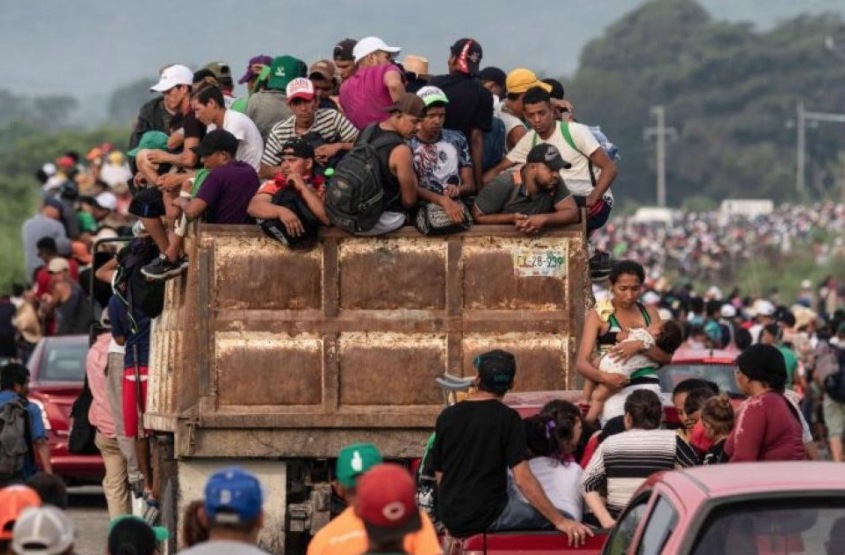The images of the caravans of migrants trying to leave the city of Tapachula and their neutralization by agents of the National Migration Institute (INM) and the National Guard have once again shocked the international community. In the last few weeks four caravans composed of some four hundred people, mainly Central Americans, Haitians and Venezuelans, have been dispersed after traveling a little more than forty kilometers from Tapachula. The violence of the “rescue” of migrants -as authorities describe it- which has also been reflected in different media, has led to the sanctioning of at least two INM agents.
In this border city in the south of Mexico, as in other cities in the north of the country, thousands of migrants are concentrated waiting for documentation to continue their journey to the United States. The presence of more than 80,000 migrants in a city with a population of close to 354,000 inhabitants generates a significant negative impact on the coexistence of citizens and on the warming of moods.
The lack of response and resources from Mexican immigration authorities does not contribute to the efficient management of “documented and orderly migration”. Between January and July 2021, the INM has delivered only 23,670 visitor cards nationwide for humanitarian reasons and 11,768 permanent resident cards for refugee recognition.
Record number of migrants detained in 2021
Since 2015, the U.S. Border Patrol has detained an annual average of half a million migrants, which is in addition to those that the INM has “rescued” in Mexico and returned to their countries of origin. In 2019 during the Trump administration the border patrol detained 977,509 migrants. In 2020, at the height of the pandemic, it returned to half a million detainees. As of July 2021, it has reached a historic figure of 1, 331,822 during the Biden administration.
The caravans have little chance of success from the moment they begin to organize. Without support structures, such as those offered by organized crime or family networks, it is impossible for migrants to cross Mexico. So, the number of migrants detained by U.S. authorities can only be understood for two reasons: an intensification by the U.S. government of measures to prevent the passage of migrants or the strengthening of organized crime in the business of transit of undocumented migrants to the north.
At the beginning of López Obrador’s administration, Mexico had the intention of opening its borders and promoting the economic development of the Mexican southeast and Central America with the idea that Central Americans, in turn, would have no incentive to leave their places of origin. Even the Mexican president recalled this idea a few days ago.
However, pressure by Donald Trump blocked this attempt. The National Guard, which was created initially to fight organized crime, has also been charged with the neutralization of migrants on Mexico’s southern border. Since 2019 Mexico has “rescued” 496,189 undocumented migrants and returned just under 300,000 to their countries of origin.
The effects of the pandemic
The Covid-19 epidemic has had no effect on discouraging the crossing of migrants. The reduction in the number of detainees in 2020 is due more to the relative “relaxation” of the immigration authorities than to the reduction in the passage of migrants who have been passing through with greater or lesser difficulty to the United States since the 1980s.
The tightening of repressive measures by the U.S. government and the pressure on Mexico to do the same is only serving to strengthen organized crime and increase the economic cost of migrating north for Central American citizens.
The migrants in Tapachula are the poorest of the poor and are condemned to wait for a response from the Mexican government or try other routes. There are many points on Mexico’s southern border through which they could venture in a more discreet and successful way, but these are controlled by different organized crime groups and are dangerous, especially if you do not know the territory.
The Ceibo-Tenosique route in the state of Tabasco, which borders the department of Petén in Guatemala, or the nearby Bethel-Corozal route, crossing the Usumacinta River on the way to Palenque in Chiapas are two examples of routes widely used by Central American migrants in recent years. These are where bottlenecks such as the one formed in Tapachula have not yet arisen. In the coming weeks, it is very likely that the problem will expand to these migratory nodes.
Translated from Spanish by Alek Langford












